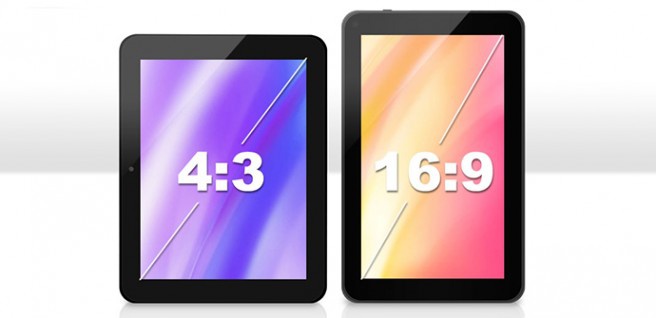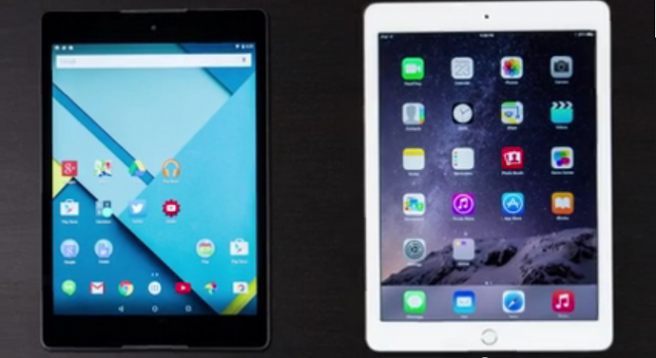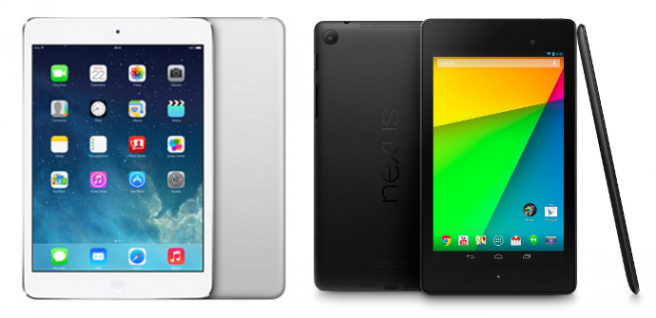874
Advantages and disadvantages of the 4: 3 format compared to the panormico
Written by
February 26, 2015 at 22:00
Since the launch of the first iPad, Apple has always opted for the format 4: 3 For your tablets. However, it was with the arrival of the first Android models when the use of the panoramic format began to become popular, 16: 9 or 16:10, a trend that was reinforced by many of the Windows tablet manufacturers. Last year, Google opted for 4: 3 for its new Nexus 9 and now it seems that Samsung, another of the platform's standards, could also adopt this change with its new 2015 models, which has reopened the debate on which screen ratio is more appropriate.
Until now, the iPads that Apple launched to the market every year, up to the iPad Air 2 and iPad mini 3, latest models of 2014 were not the only ones, but of the few that opted for 4: 3. The panoramic format seemed to prevail until this past year so much Microsoft with Surface Pro 3 and Google with Nexus 9, two of the most influential devices, decided to change at ratios of 3: 2 and 4: 3 respectively. As if that were not enough, now Samsung seems, according to different rumors, that it will also be passed at 4: 3 with the new Galaxy Tab S2. Why? What advantages does it offer? We tell you the main arguments that have led to this change of opinion, as well as the things that lose with the change, although you can always leave your opinion in the comments if you think you can contribute something.
 Advantage
Advantage
The first thing that stands out at first sight of a tablet with a 4: 3 ratio is that it is much more square than a panoramic one. This facilitates its use both vertically and horizontally, since the content will not have to make too large adjustments when we change. Something that seems so logical leads us directly to the first advantage or argument in favor, versatility. Depending on what we are doing at each moment we can change to make its use more comfortable, being equally viable in both cases.
Once we take this for granted, we move on to the really important thing that this approach to the square shape entails. Tasks like read (ebooks, pdf or any type of document that our tablet can open) and therefore, surfing the Internet (especially websites with text such as blogs or forums) is much more comfortable from a tablet with 4: 3 format. It is the main reason that has led Google in collaboration with HTC to bet on this ratio for the Nexus 9, surely the fundamental pillar where Samsung would support, if confirmed, to justify its choice. By having a greater width in a vertical position, the content adjusts much better without losing too much vertical viewing range, while a panoramic, with a much smaller width practically forces us to read or navigate horizontally losing vision on the vertical axis .

Finally, an advantage that until now had hardly been taken into account, but which has also become fundamental for these brands, is that working on a 4: 3 format tablet is also more comfortable. It is true that it makes it very difficult to use multiventana that more and more models incorporate, but at these levels (in screens of more inches the thing changes), they offer a better vision of the workspace. The business market is one of the juiciest today and manufacturers can not ignore it, devices such as the Nexus 9, with great productive character, go on to consider 4: 3 as a better alternative.
Disadvantages
This section can be summarized in one sentence: multimedia content consumption. The 16: 9 and 16:10 ratios are ideal for consuming all kinds of multimedia content, from YouTube videos to movies or our favorite series. The vast majority of contents have already been adapted to this format for years (there are exceptions such as the acclaimed series The wire), and these tablets allow you to view them without the typical black bands. Really if your usual use of a tablet is to watch video whatever its source, do not hesitate and always choose a model with panoramic format.

The tablets with 4: 3 will not have problems when playing this content, but they will usually do it with big black bands. This problem is bearable in the case of large tablets, but it becomes larger as the diagonal is reduced. Also for connect them to panoramic TVs and that everything is seen in the best way may require certain tweaks in the configuration of the devices.
Conclusions
So Google or Samsung succeed in making the change? It is difficult to respond and will always depend on the use of each user. In broad strokes we can say that in the case of Google with a 9-inch Nexus, it was a good decision, since black bands, although being annoying, is a minor evil for everything it offers in return. If the 8 and 9.7 inch sizes For the new Galaxy Tab S2, the same applies to the larger diagonal model, but there are more doubts with the small one. What do you think? Do you prefer 4: 3 or panoramic?

